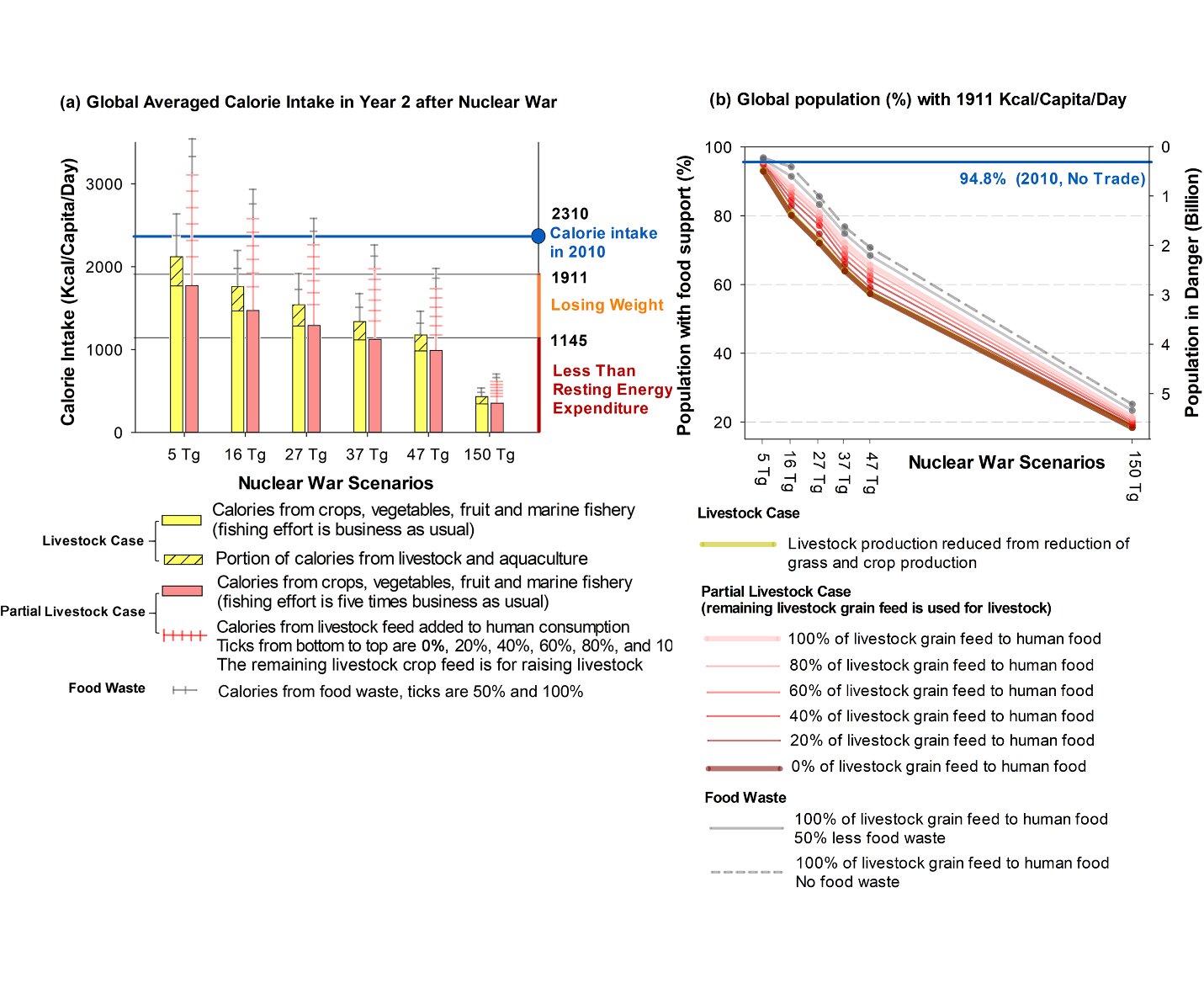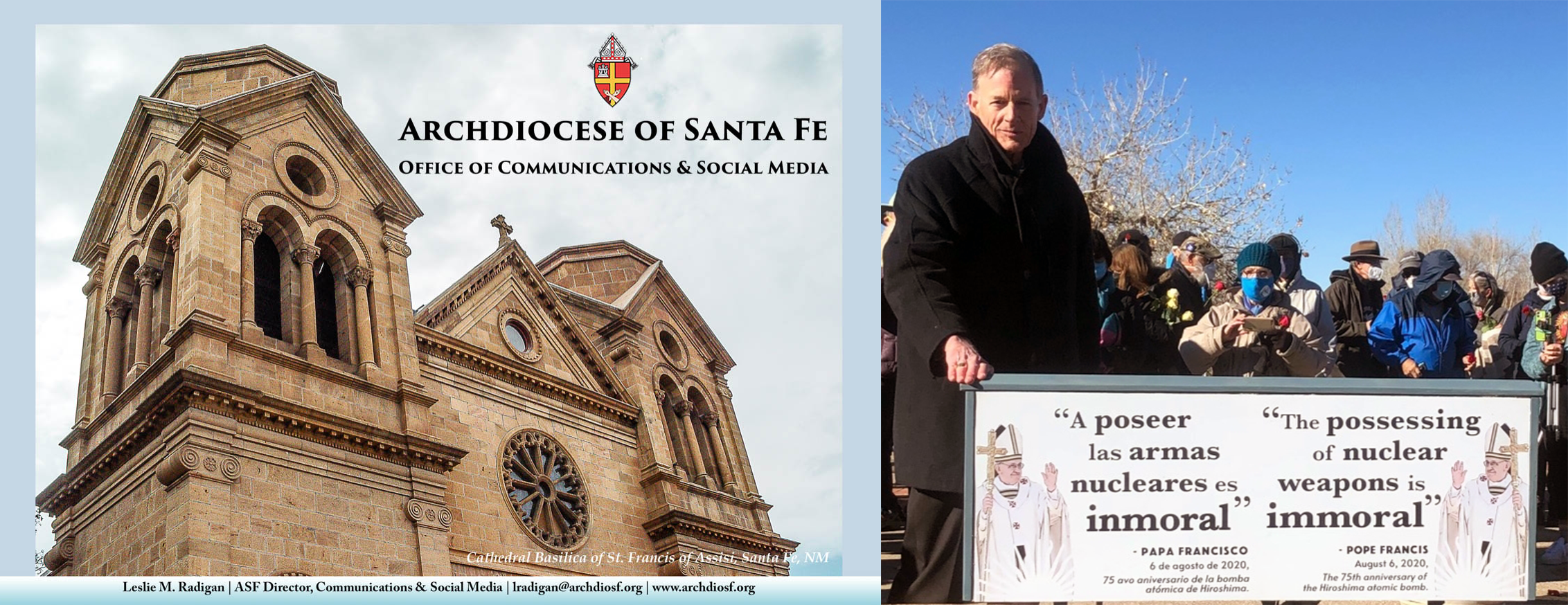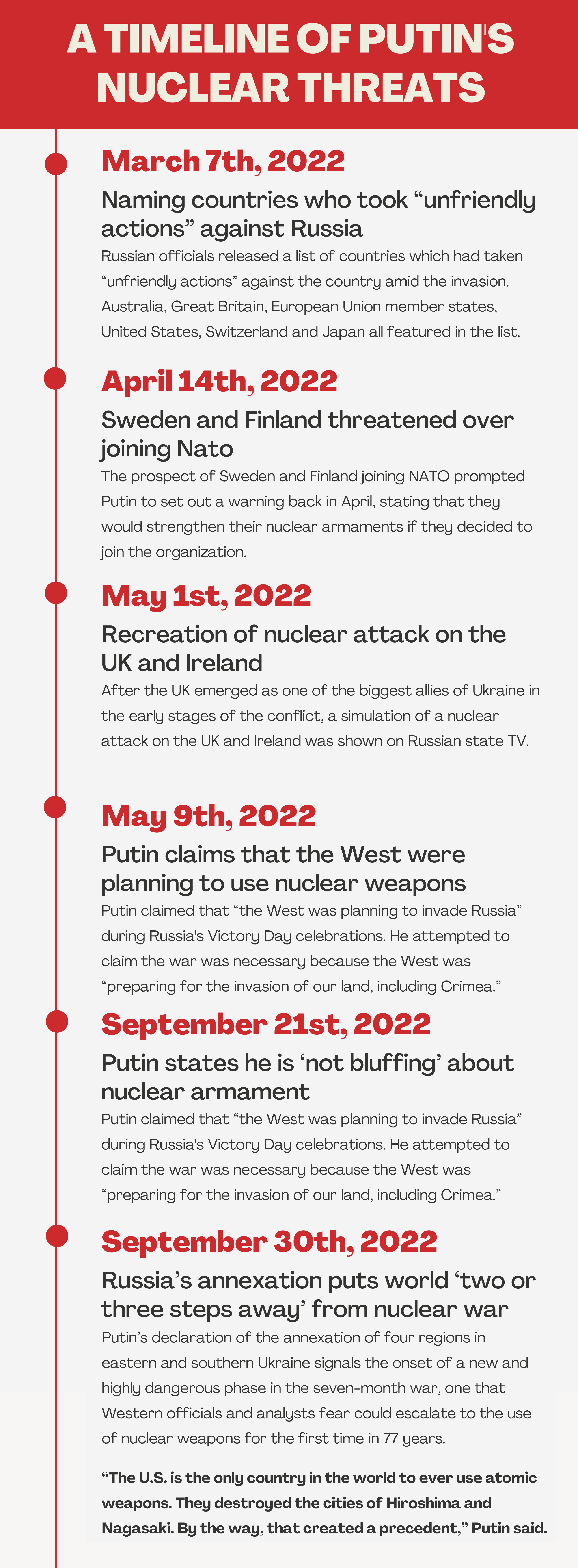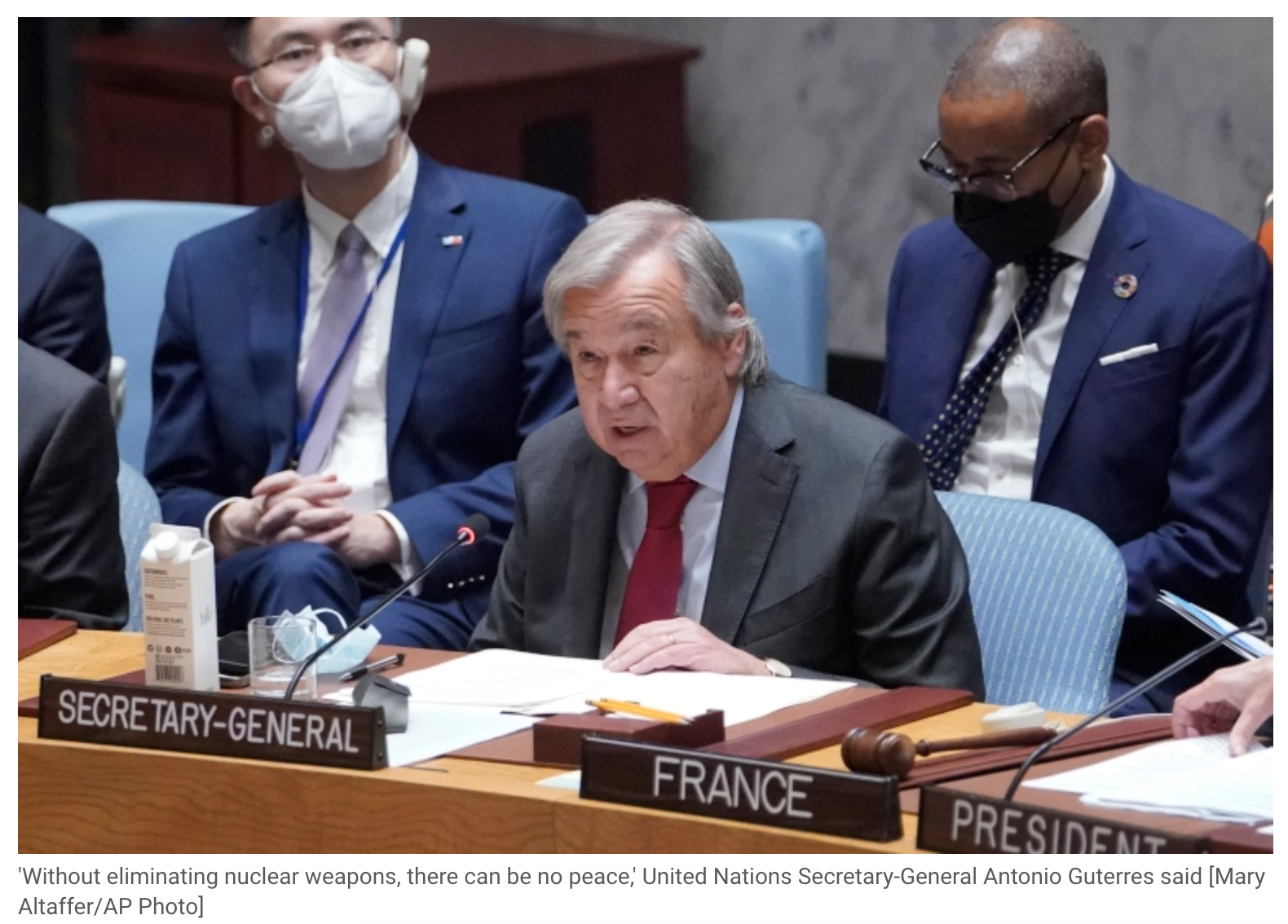QUOTE OF THE WEEK
Nothing Found
It seems we can’t find what you’re looking for. Perhaps searching can help.
LANL’s Central Mission: Los Alamos Lab officials have recently claimed that LANL has moved away from primarily nuclear weapons to “national security”, but what truly remains as the Labs central mission? Here’s the answer from one of its own documents:
LANL’s “Central Mission”- Presented at: RPI Nuclear Data 2011 Symposium for Criticality Safety and Reactor Applications (PDF) 4/27/11
Banner displaying “Nuclear Weapons Are Now Illegal” at the entrance in front of the Los Alamos National Lab to celebrate the Entry Into Force of the Nuclear Weapon Ban Treaty on January 22, 2021
Nothing Found
It seems we can’t find what you’re looking for. Perhaps searching can help.
Follow the Money!
Map of “Nuclear New Mexico”
In 1985, US President Ronald Reagan and Russian President Mikhail Gorbachev declared that “a nuclear war cannot be won and must never be fought.”

Waste Lands: America’s Forgotten Nuclear Legacy
The Wall St. Journal has compiled a searchable database of contaminated sites across the US. (view)
Related WSJ report: https://www.wsj.com
NEW & UPDATED
STATEMENT: Archbishop Wester on Feast Day of St. Francis, Pray for Peace in Ukraine, Abolition of Nuclear Weapons
Today, October 4 is the feast day of St. Francis, the tireless promoter of peace and patron saint of the Archdiocese of Santa Fe.
Pope Francis chose his name in honor of St. Francis of Assisi, and three days ago, he declared:
“The course of the war in Ukraine has become so serious, devastating, and threatening as to cause great concern… [W]hat about the fact that humanity is once again faced with the atomic threat? It is absurd… It increases the risk of nuclear escalation, giving rise to fears of uncontrollable and catastrophic consequences worldwide.”
This October is the 60th anniversary of the Cuban Missile Crisis, about which then-Defense Secretary Robert McNamara said humanity survived only by luck. Sixty years later, we are facing the most serious nuclear threats since then.
Pope Francis has called for the abolition of nuclear weapons, declaring they can no longer be justified even by the deterrence strategy of Mutually Assured Destruction.
Biden Thinks Non-Nuclear Threats Will Stop Putin. His Military Doesn’t
“We’re in uncharted territory,” says a senior intelligence officer. “Threatening to respond forcefully and creating catastrophic consequences for Russia [without] suggesting nuclear war: Is that strong enough to deter Putin? And is it really clear? I’m not so sure.”
BY WILLIAM M. ARKIN, NEWSWEEK | September 30, 2022 newsweek.com
The United States would “respond forcefully” to any Russian nuclear strike, President Biden said—but there’s a divide between his administration and some of his military advisers over the role of American nuclear weapons and the most effective way to deter Vladimir Putin, knowledgeable sources tell Newsweek.
“It’s the closest we’ve been to the use of nuclear weapons in over 50 years,” says one civilian working at the Omaha, Nebraska-based Strategic Command. “But I’m not so sure that we are communicating the right thing to deter Putin.”
The Age of Predatory Nuclear-Weapon States Has Arrived
Putin’s nuclear threat marks the start of a new era.
POLITICO | Opinion by Stephen Young, Union of Concerned Scientists | September 30, 2022 politico.com
Russia’s invasion of Ukraine makes at least one thing clear: It’s time for us to update how we think about nuclear weapons. For the first time in the nuclear era, one country used loudly issued nuclear threats — repeated just last week — to deter other countries from intervening in a large-scale conventional war of aggression. We have entered the age of “predatory nuclear-weapon states.”
For political analysts and military officials, this is not an unexpected phenomenon. On the contrary, the concept falls under the so-called stability-instability paradox. Because the threat of nuclear war is so terrifying and the risk of annihilation so real, lower-level conflict actually becomes more feasible. One nuclear-armed country can undertake major conventional military action, expecting that its nuclear capability will prevent outside intervention. That is what’s happening in Ukraine.
BREAKING: Putin illegally annexes 4 occupied regions, escalating war as Ukraine applies to join NATO
“Kyiv has vowed to keep fighting to retake its occupied land, and on Friday appeared on the verge of handing Russia’s military another significant setback.”
NBC NEWS | September 30, 2022 nbcnews.com
The Russian leader repeated his threats of nuclear war to defend his fragile hold over the annexed territory, a dramatic escalation of the seven-month conflict that has seen Moscow respond to heavy losses by calling up hundreds of thousands of reservists and intensifying its confrontation with the West.
The speech was met with an immediate response by Kyiv and its allies.
As well as announcing the annexation, Putin has partially mobilized his military — prompting domestic blowback and an exodus of Russians fleeing the draft — and ramped up his nuclear threats against Ukraine and the West. The moves are seen as a wider escalation after a series of punishing battlefield defeats at the hands of a lightning counteroffensive by Kyiv.
UN chief calls for end to ‘era of nuclear blackmail’
Guterres renews call for the abolition of nuclear weapons as concerns grow over Russia’s threat to use them in Ukraine.
ALJAZEERA | September 26, 2022 aljazeera.com
United Nations Secretary-General Antonio Guterres has renewed his call for the global abolition of nuclear weapons as concerns grow over Russia’s threat to use them in the Ukraine war.
“Decades after the fall of the Berlin Wall, we can hear once again the rattling of nuclear sabres,” Guterres told a special UN General Assembly session on nuclear disarmament on Monday.
Nuke waste managers work to improve safety after incidents at repository near Carlsbad
Crews at Idaho National Laboratory and the Waste Isolation Pilot Plant nuclear waste repository near Carlsbad met last week to improve safety standards shared between the two facilities after a string of problematic waste shipments from the lab triggered a state investigation.
Adrian Hedden, Carlsbad Current-Argus | September 22, 2022 yahoo.com
So far this year, WIPP personnel were alerted to issues with three shipments of transuranic (TRU) nuclear waste from the Idaho lab, leading to suspensions of waste shipments from the biggest shipper of waste to WIPP.
The first incident was reported on April 9, per a letter from the New Mexico Environment Department which regulates the U.S. Department of Energy’s permit to operate WIPP, and involved a liquid substance found on a waste drum that initially tested positive for radioactivity.
This led to an evacuation of the waste handling building, and a temporary halt on shipments of that kind from Idaho National Laboratory while the waste was sent back to Idaho.
Global food insecurity and famine from reduced crop, marine fishery and livestock production due to climate disruption from nuclear war soot injection
“Atmospheric soot loadings from nuclear weapon detonation would cause disruptions to the Earth’s climate, limiting terrestrial and aquatic food production. Here, we use climate, crop and fishery models to estimate the impacts arising from six scenarios of stratospheric soot injection, predicting the total food calories available in each nation post-war after stored food is consumed. In quantifying impacts away from target areas, we demonstrate that soot injections larger than 5 Tg would lead to mass food shortages, and livestock and aquatic food production would be unable to compensate for reduced crop output, in almost all countries. Adaptation measures such as food waste reduction would have limited impact on increasing available calories.
We estimate more than 2 billion people could die from nuclear war between India and Pakistan, and more than 5 billion could die from a war between the United States and Russia—underlining the importance of global cooperation in preventing nuclear war.”
NATURE | August 2022 nature.com

FULL ARTICLE – NATURE
Watchdog sues nuclear agency over LANL evaluations
“Coghlan said an example of why the full assessment is necessary is a note on last year’s report for the Los Alamos lab saying it had struggled with some production activities and experienced several challenges carrying out the plutonium mission, and “mission execution was impacted by lapses in safety performance.”
By Scott Wyland swyland@sfnewmexican.com The Santa Fe New Mexican | September 17, 2022 santafenewmexican.com
A New Mexico watchdog group is suing the federal agency that oversees the nation’s nuclear weapons programs for issuing only summaries of its yearly report cards on national laboratories and withholding what the group contends is vital information on deficiencies.
The lawsuit seeks to compel the National Nuclear Security Administration to post in its public reading room the complete report cards for the eight national laboratories involved in nuclear weapons — ones it has withheld in the past and all future assessments.
Allowing the public to see, in particular, the full report on Los Alamos National Laboratory’s shortcomings is increasingly important as the lab gears up to make 30 plutonium bomb cores a year with an escalating federal budget, Jay Coghlan, executive director of Nuclear Watch New Mexico, said in a statement.
The National Nuclear Security Administration’s yearly report cards assess the performances of contracted lab operators and award bonuses to the organizations based on their grades in a process that is not classified, Coghlan argued.
Continue reading
Watchdogs File Suit for NNSA’s Performance Evaluation Reports

 Santa Fe, NM – Today, Nuclear Watch New Mexico has once again filed a lawsuit to pry loose the National Nuclear Security Administration’s (NNSA’s) full and complete Performance Evaluation Reports that evaluate contractor performance at its eight nuclear weapons sites. Approximately 57,000 people are employed by NNSA’s nuclear weapons production complex, 95% of them contractor personnel. NNSA and its parent Department of Energy have been on the independent Government Accountability Office’s “High Risk List” for project mismanagement and waste of taxpayers’ dollars since 1992.
Santa Fe, NM – Today, Nuclear Watch New Mexico has once again filed a lawsuit to pry loose the National Nuclear Security Administration’s (NNSA’s) full and complete Performance Evaluation Reports that evaluate contractor performance at its eight nuclear weapons sites. Approximately 57,000 people are employed by NNSA’s nuclear weapons production complex, 95% of them contractor personnel. NNSA and its parent Department of Energy have been on the independent Government Accountability Office’s “High Risk List” for project mismanagement and waste of taxpayers’ dollars since 1992.
NNSA’s Performance Evaluation Reports grade contractor performance, award performance fees and contain no classified information. Nevertheless, NNSA seeks to hide how taxpayers’ money is spent from the public, issuing only terse three page summaries instead of the full and complete Reports. Nuclear Watch sued in 2012 to obtain the full and complete Performance Evaluation Reports, after which NNSA started releasing them within three working days. But NNSA has again been releasing only summaries since 2019, despite a Freedom of Information Act request by Nuclear Watch that the agency never responded to.
To illustrate the importance of these Performance Evaluation Reports, in its FY 2021 Los Alamos Lab summary NNSA noted that the contractor “[s]ucessfully made advances in pit production processes…” Plutonium “pits” are the fissile cores of nuclear weapons whose expanded production the Pentagon has identified as the number one issue in the United States’ $2 trillion nuclear weapons “modernization” program. NNSA has directed the Los Alamos National Laboratory (LANL) to begin producing at least 30 pits per year by 2026 and the Savannah River Site (SRS) in South Carolina to begin producing at least 50 pits per year by 2030.
Watchdogs File Suit for NNSA’s Performance Evaluation Reports
FOR IMMEDIATE RELEASE, September 15, 2022 |
Jay Coghlan, 505.989.7342 jay@nukewatch.org
Santa Fe, NM – Today, Nuclear Watch New Mexico has once again filed a lawsuit to pry loose the National Nuclear Security Administration’s (NNSA’s) full and complete Performance Evaluation Reports that evaluate contractor performance at its eight nuclear weapons sites. Approximately 57,000 people are employed by NNSA’s nuclear weapons production complex, 95% of them contractor personnel. NNSA and its parent Department of Energy have been on the independent Government Accountability Office’s “High Risk List” for project mismanagement and waste of taxpayers’ dollars since 1992.
NNSA’s Performance Evaluation Reports grade contractor performance, award performance fees and contain no classified information. Nevertheless, NNSA seeks to hide how taxpayers’ money is spent from the public, issuing only terse three page summaries instead of the full and complete Reports. Nuclear Watch sued in 2012 to obtain the full and complete Performance Evaluation Reports, after which NNSA started releasing them within three working days. But NNSA has again been releasing only summaries since 2019, despite a Freedom of Information Act request by Nuclear Watch that the agency never responded to.
To illustrate the importance of these Performance Evaluation Reports, in its FY 2021 Los Alamos Lab summary NNSA noted that the contractor “[s]ucessfully made advances in pit production processes…” Plutonium “pits” are the fissile cores of nuclear weapons whose expanded production the Pentagon has identified as the number one issue in the United States’ $2 trillion nuclear weapons “modernization” program. NNSA has directed the Los Alamos National Laboratory (LANL) to begin producing at least 30 pits per year by 2026 and the Savannah River Site (SRS) in South Carolina to begin producing at least 50 pits per year by 2030.
CRITICAL EVENTS
Nothing Found
It seems we can’t find what you’re looking for. Perhaps searching can help.
ACTION ALERTS
Nothing Found
It seems we can’t find what you’re looking for. Perhaps searching can help.
Nothing Found
It seems we can’t find what you’re looking for. Perhaps searching can help.
New Nuclear Media: Art, Films, Books & More
Nothing Found
It seems we can’t find what you’re looking for. Perhaps searching can help.
Nothing Found
It seems we can’t find what you’re looking for. Perhaps searching can help.





















